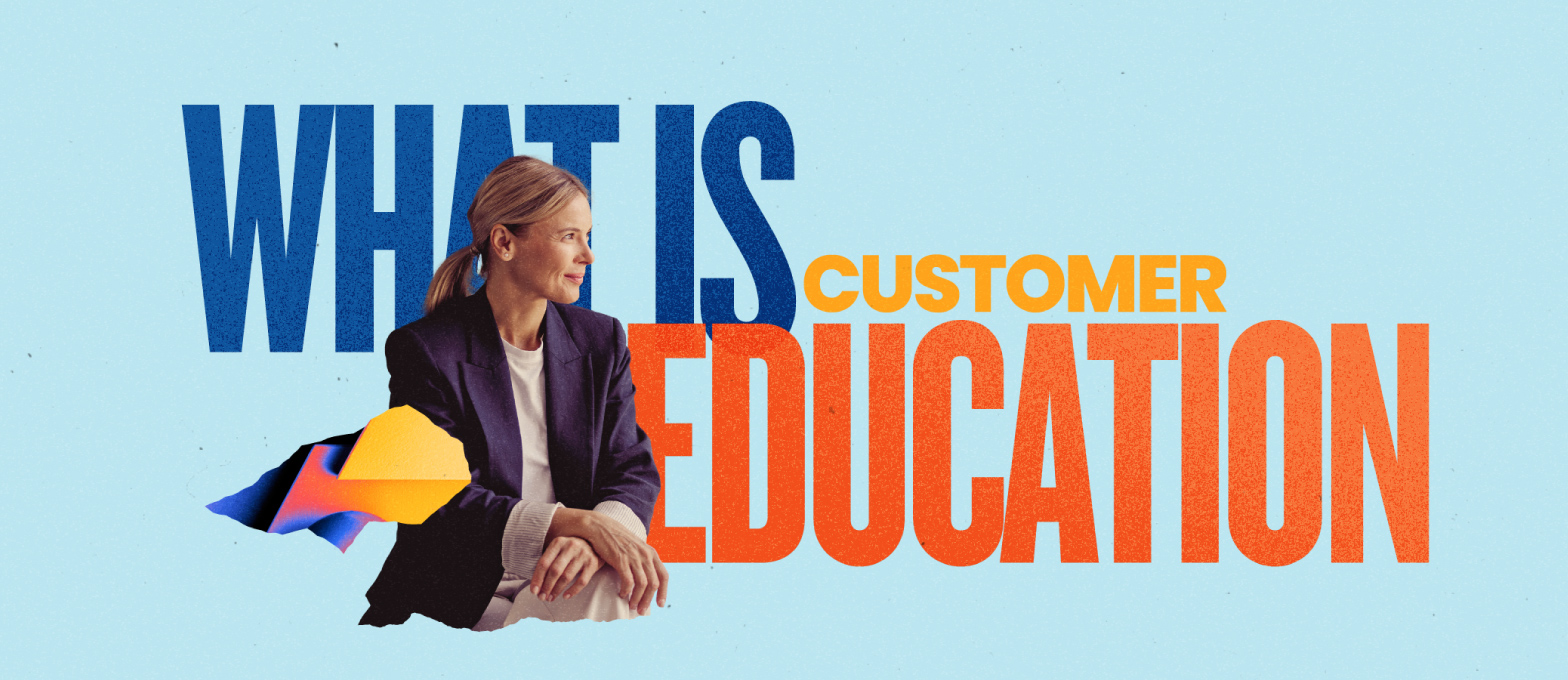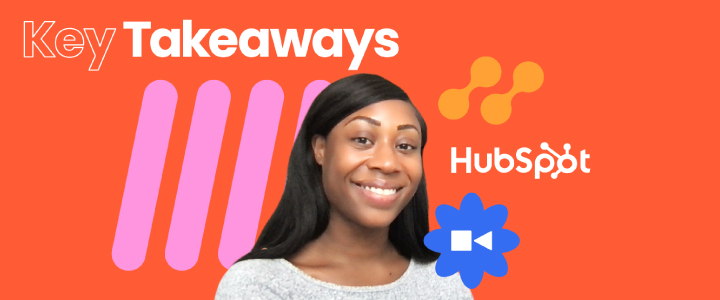
6 min reading time
Customer Education: What It Is and Why It’s Important for Your Business
When customers buy your product, both you and they share the same goal: business growth and success. Your product or service is designed to solve a problem that will help them do that, and you want your customers to fully understand how it’s the solution they need. But how do you make sure they really get it? The answer is simple: quality customer education.
Customer education has been around for years, but it’s more important now than ever. Thanks to better tech and easier access to resources, it’s now a must-have strategy for businesses that want to see their customers thrive.
Whether you’re looking to build a new customer education program, or take an existing one to the next level, this guide will walk you through how to get it right.
What is Customer Education?
Customer education is more than just handing out guides or tutorials. It’s about empowering your customers to use your product confidently and independently. It’s the bridge between first-time users and loyal advocates – guiding them every step of the way, from that first interaction through to becoming experts.
When your customers truly understand how to leverage your product, adoption rates rise, friction decreases, and retention strengthens. In short, great customer education isn’t just helpful – it’s a key growth lever for your business.
Why is Customer Education Important?
Effective customer education has ripple effects that touch every corner of your business. When done right, it fuels growth, builds trust, and positions your product as indispensable. Let’s break down why it’s such a powerful strategy.
Showcases how to get the most from your product
The most obvious win? You’re teaching customers how to use your product as effectively as possible. You’re training them on how to use features that will make their lives easier, solve their problems faster, and show them best practices so they can see the results they need.
Empowers your support team
How often does your support team spend time on answering repetitive, simple questions? Education cuts down on these kinds of queries, allowing your support staff to focus on more complex, impactful conversations. When customers have the knowledge, they can troubleshoot and solve on their own, freeing up your team for higher-value interactions.
Drives customer satisfaction
Happy customers are the lifeblood of any business. By educating them, you’re giving them the tools they need to win. When they can confidently use your product, satisfaction deepens and leads to more repeat business and long term loyalty.
Strengthens word of mouth behind your brand
When customers are satisfied, they talk. Positive word of mouth is the ultimate marketing tool, turning your educated users into brand advocates. They’ll leave glowing reviews, recommend you to peers, give you higher NPS ratings, and share their success with your product, all naturally boosting your reputation and helping your business grow.
Drives real business growth
Educating customers isn’t just about retention, it’s a genuine strategy for growth. Educated customers become power users who adopt new features faster, are open to upsells, and spread the word. The more knowledgeable your customers, the faster your business will scale.
How to Implement an Effective Customer Education Program
If you want to step up your customer education game, it starts with taking stock of what you’re already doing and coming up with a plan of attack to make it better. Here’s how:
Take a close look at what’s already happening
Almost every business has some kind of customer training, even if it’s just a quick guide or a few tips shared in an email. The key is to get a clear picture of everything that’s already out there. Ask yourself:
- What resources are we giving customers right now? (This could be anything from guides, support docs, or even an email that goes out when someone first signs up.)
- Who’s involved in customer training? (It’s usually more than one team, like Sales, Support, and Marketing.)
- What tools are we using? (Do you have an LMS? A support center? Any webinars?)
Once you have a handle on this, dig deeper to see where the gaps are. Check common support tickets or interview customers to find out where people are getting stuck.
Pinpoint and fill in the gaps
Once you’ve laid everything out, the gaps will start to show up. Maybe customers are dropping off after the first week because onboarding wasn’t clear, or they’re unaware of your other features, so they never explore upsell opportunities. Maybe you get a lot of repeated support queries that could be answered with better training.
Find as many of these gaps as you can, because they’re going to guide your next steps. Then, when they’re clear, here’s how to fill them in:
- Onboarding issues? Create a set of welcome courses to guide new users step-by-step through their first interactions with your product.
- Missed upsell opportunities? Introduce training on more advanced features to show customers the full potential of your offering.
- High support queries? Build quick, accessible guides or FAQs that address common stumbling blocks, so customers can find help when they need it.
By clearly identifying your gaps and setting up a plan to fix them, you’ll start to see smoother customer journeys, fewer frustrations, and a better overall experience.
Choose the Right Tools for Your Customer Education Program
Now that you have a clear view of your customers’ challenges, and how you’re going to help solve them, it’s time to equip yourself with the right tools. These will make all the difference in delivering top-notch training efficiently and effectively.
A customer training LMS (Learning Management System) is the foundation – it will help manage, track, and deliver your customer education. But beyond that, there are many other tools you can mix and match to give your customers the best experience. For example:
- In-app guides that lead users through your product, right when they need help the most.
- A blog packed with helpful content, from how-to articles to best practices.
- Customer support documents that provide detailed instructions and answers to common questions, either within your LMS or in a support knowledge base.
You don’t have to introduce everything at once. Start with the most critical tools for where your customers are struggling and scale up as you go. The goal is to meet your customers where they are, with the resources that make their journey smoother.
Build the Right Training Resources for Your Customers
Once you’re clear on the tools you’ll need and will use, it’s time to start building your training materials. The key here is to start small and focus on where you can make the biggest impact. Don’t try to build everything at once – tackle the areas where your customers are struggling the most.
For instance, if you’re losing customers in the early stages, start by creating a series of onboarding courses that focus on helping them get started quickly and confidently. Or, if you’re dealing with recurring support queries, develop support documents that directly address those issues, so customers can find the answers they need, right when they need them.
The trick is to plug the biggest gaps first and expand from there. As you go, you’ll refine and improve, building a library of resources that are perfectly tailored to your customers’ needs.
Build, Test, and Continuously Improve Your Customer Education Strategy
Customer education isn’t something you can build once and forget about. To keep your training relevant and effective, you need to view it as a living, breathing part of your business strategy. The companies that do this best are the ones that see customer education as an ongoing process – constantly updating and refining their training based on customer feedback and evolving needs.
Use your LMS to track how customers are engaging with your content and where they’re running into challenges. Dig into your support queries to spot common issues that can be addressed with better training. And most importantly, listen to your customers. Their feedback will guide you in improving your courses, ensuring they deliver the value your customers are looking for.
By regularly checking in and iterating, your customer education program will stay aligned with your customers’ needs and have a real impact on their success.
Ready to take your customer education to the next level? Download our free eBook, How to Build a Customer Training Academy That Drives Results, for expert insights and clear step-by-step guidance.




